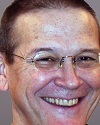
Complex systems are designed by engineers to operate in deterministic and static conditions, but actually operate in stochastic or random and dynamic environments and this requires the system to be adapted. Dr Richard Cook says that the bridge between system theory and application is operators who are resilient. Their resilience consists of four factors. These are System Monitoring, Responding to Events, Adapting to Changing Conditions of a system, and Learning How to Apply a System in ways that differ from the way it was envisioned. Collectively these factors bear the name of "resilience engineering" or "system resilience".
Systems in reality, or practice, are not the same as their formal presentation, or theory. Systems are designed to be reliable, with boundaries, layers, defenses in depth, assurance mechanisms, reviews and interference protection for imagined conditions. However, as soon as a system is placed in operation it needs maintenance where maintenance is defined as people, their training, equipment they use, and observational directives they apply. Maintenance is a continuous, not sporadic, process.
System developers or engineers and operators oftentimes occupy two camps. Dr Cook says the camps should be combined or at least coordinated so systems which are closed can be opened. Tools that can be used by engineers to open a system include the Functional Resonance Analysis Method (FRAM) drawing. Dr Cook points out that the lift points identified on heavy equipment need to be used in systems and made visible to operators so they know what's inside those inscrutable black boxes. By doing this design engineers will make resilience engineering the first priority of the next generation of a system. Part of this process must also include the commitment of resources to discover, understand and support the application of resilience engineering during the entire life cycle of a component.
%spot
Dr. Richard Cook is the Professor of Healthcare Systems Safety and Chairman of the Department of Patient Safety at the Kungliga Techniska Hogskolan (the Royal Institute of Technology) in Stockholm, Sweden. He is a practicing physician, researcher and educator.
Dr. Cook graduated with honors from Lawrence University in Appleton, Wisconsin where he was a Scholar of the University. He worked in the computer industry in supercomputer system design and engineering applications. He received the MD degree from the University of Cincinnati in 1986 where he was a General Surgery intern. Between 1987 and 1991 he was researcher on expert human performance in Anesthesiology and Industrial and Systems Engineering at The Ohio State University. He completed an Anesthesiology residency at Ohio State in 1994. From November 1994 until April 2012 he was faculty in the Department of Anesthesia and Intensive Care of the University of Chicago.
Dr. Cook was a member of the Board of the National Patient Safety Foundation from its inception until 2007. He is internationally recognized as a leading expert on medical accidents, complex system failures, and human performance at the sharp end of these systems. He has investigated a variety of problems in such diverse areas as urban mass transportation, semiconductor manufacturing, and military software systems. He is often a consultant for not-for-profit organizations, government agencies, and academic groups. He does not do any expert witness testimony for litigation.
Dr. Cook’s most often cited publications are “Gaps in the continuity of patient care and progress in patient safety”, “Operating at the Sharp End: The complexity of human error”, “Adapting to New Technology in the Operating Room”, and the report “A Tale of Two Stories: Contrasting Views of Patient Safety”
Resources
This free podcast is from our Velocity Conference series.
For The Conversations Network: